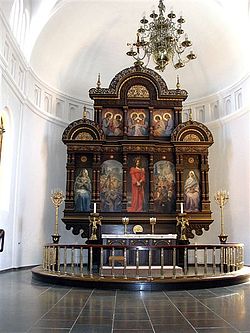
The Hospital of the Holy Ghost, Aalborg, the buildings of which, although now without any religious function, are still known as Aalborg Kloster, is a former establishment of the Order of the Holy Ghost in Aalborg, Denmark. It was the hospital of Aalborg from 1431 to 1953 and is one of Denmark's best preserved medieval establishments. These are the oldest buildings in north Jutland, and the former hospital is also the oldest social institution in Denmark.

The Church of Our Lady is the cathedral of Copenhagen. It is situated on the Frue Plads public square in central Copenhagen, next to the historic main building of the University of Copenhagen.

Budolfi Church is the cathedral church for the Lutheran Diocese of Aalborg in north Jutland, Denmark.

Roskilde Abbey or Our Lady's Abbey, Roskilde, was a nunnery dedicated to Saint Mary the Virgin. The abbey was located at Roskilde on the Danish island of Zealand. It was founded in the early 12th century for Benedictine nuns, but in 1177 became part of the Cistercian reform movement. The abbey was suppressed in 1536 during the Protestant Reformation in Denmark. It is now the site the Old Church of Our Lady, Roskilde .
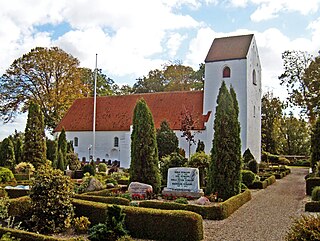
Sebber Priory was a religious house located at Sebbersund, near Nibe in northcentral Jutland, Denmark. The site is now occupied by Sebber Church as well as Sebber Kloster Golf Club and Sebber Abbey manor house.
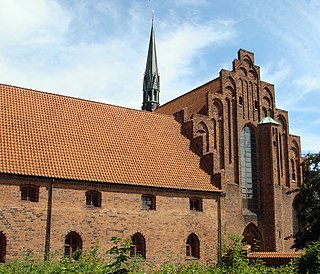
The Carmelite Priory, Helsingør, or Priory of Our Lady, Helsingør, was a house of Carmelite friars in Helsingør, Zealand, Denmark, established in 1430. It is the finest example of a complete monastic complex surviving in Denmark, and one of the best in all of Scandinavia.

Akureyrarkirkja or The Church of Akureyri is a prominent Lutheran church at Akureyri in northern Iceland. Located in the centre of the city, it was designed by Guðjón Samúelsson (1887–1950) and completed in 1940.

Our Lady's Priory, Aarhus was an early Dominican foundation just outside the original walls of Aarhus, Denmark. The buildings are part of the Church of Our Lady complex, now part of the inner city of Aarhus, but they have been repurposed.
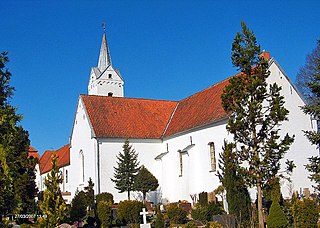
Hundslund Priory was a prominent Benedictine religious house in medieval Denmark. It was later transformed into the royal residence Dronninglund Castle. It is located at Dronninglund, north of Aalborg, Denmark.

The Church of Our Lady is a historical building at Kalundborg in northwestern Zealand, Denmark. The precise date of construction is not known with any certainty, though its architecture indicates the early part of the 13th century. With its five distinctive towers, it stands on a hill above the harbour, making it the town's most imposing landmark.
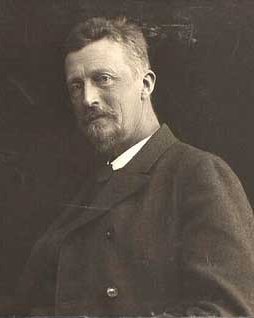
August Andreas Jerndorff was a Danish painter who is best known for his portraits.

St. Paul's Church is a Lutheran church in central Copenhagen, Denmark, also colloquially known as Nyboder's Church due to its location in the middle of the Nyboder area. It was designed by Johannes Emil Gnudtzmann and constructed from 1872 to 1877.

Johannes Emil Gnudtzmann was a Danish architect working in the Historicist style. His most notable works are St. Paul's Church and the extension of the Royal Veterinary and Agricultural University's main building, both in Copenhagen. He was the father of Kaj Gnudtzmann.

Niels Sigfred Nebelong was a Danish architect who worked in the Historicist style. He was city architect in Copenhagen from 1863 and also designed many lighthouses around Denmark in his capacity as resident architect for the Danish lighthouse authority.

Bjernede Church is a medieval era round church located near Sorø, Denmark. It is one of only seven remaining round churches in Denmark and the only one of its kind on the island of Zealand.

Hans Vilhelm Ahlmann was a Swedish and Danish architect. He is credited with designing and restoring a variety of churches in Denmark.

Frederik Vilhelm Tvede was a Danish architect.

Carl Christian Ernst Hartmann was a Danish sculptor who worked with antique motifs in the Thorvaldsen tradition.

The Old Church of Our Lady is an 11th-century brick church in Roskilde on the Danish island of Zealand.

Catholic Church of Our Lady is a church in Aarhus, Denmark. The church is situated in the central Indre By neighbourhood on the pedestrian street Ryesgade, close to the Central Station and City Hall. It is a catholic church under the Roman Catholic Diocese of Copenhagen; built between 1877 and 1880 by designs of the German architect Franz Schmitz and later renovated by the architect Carl R. Frederiksen. The church has seating for 500 people.


